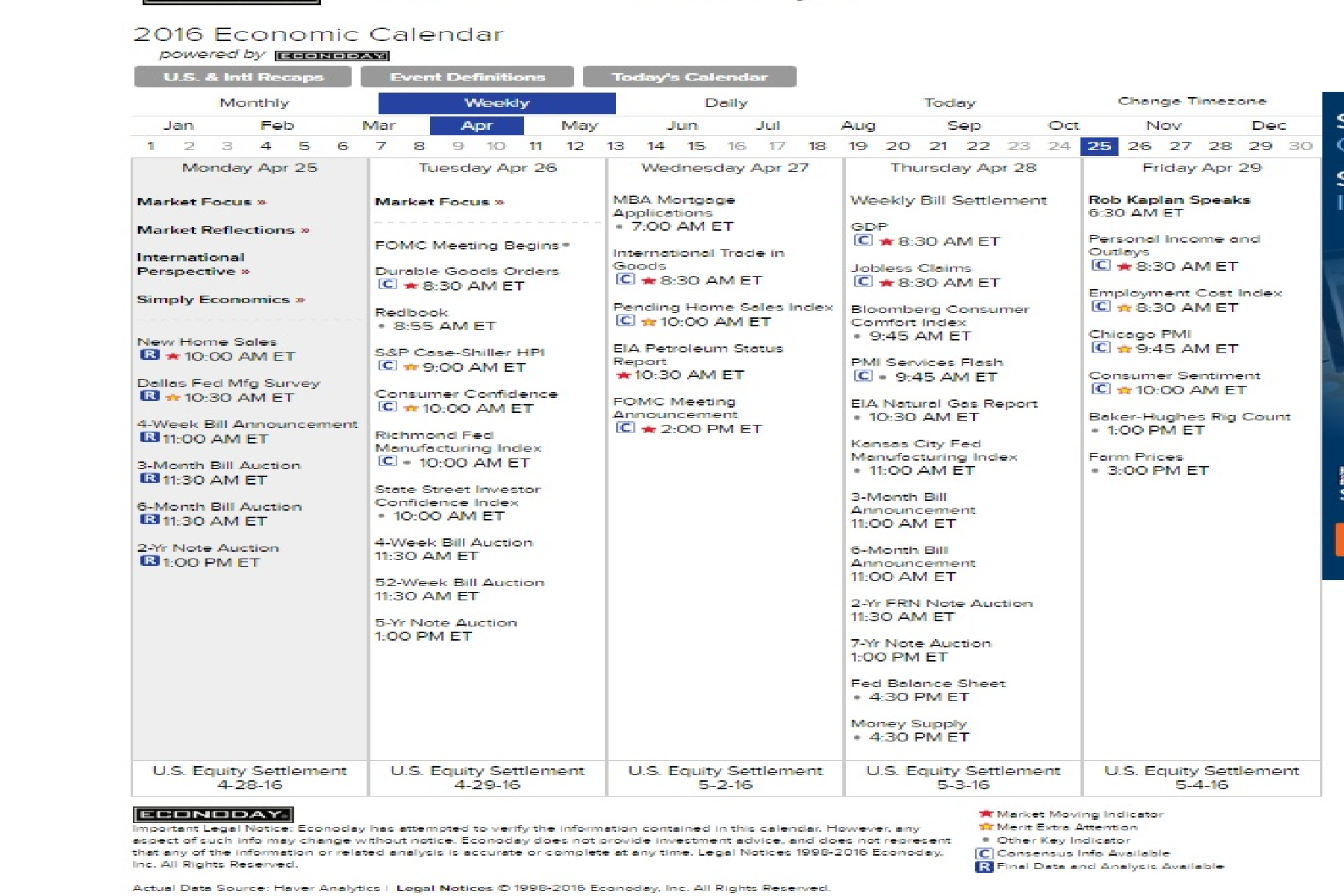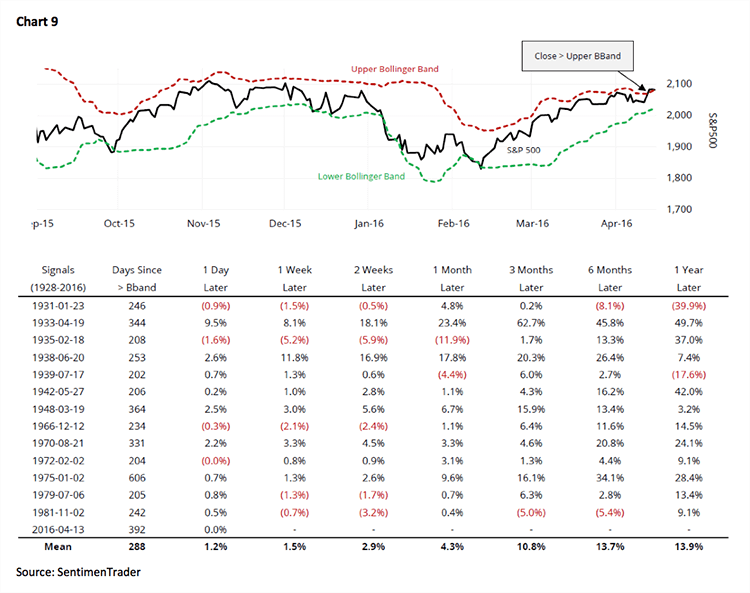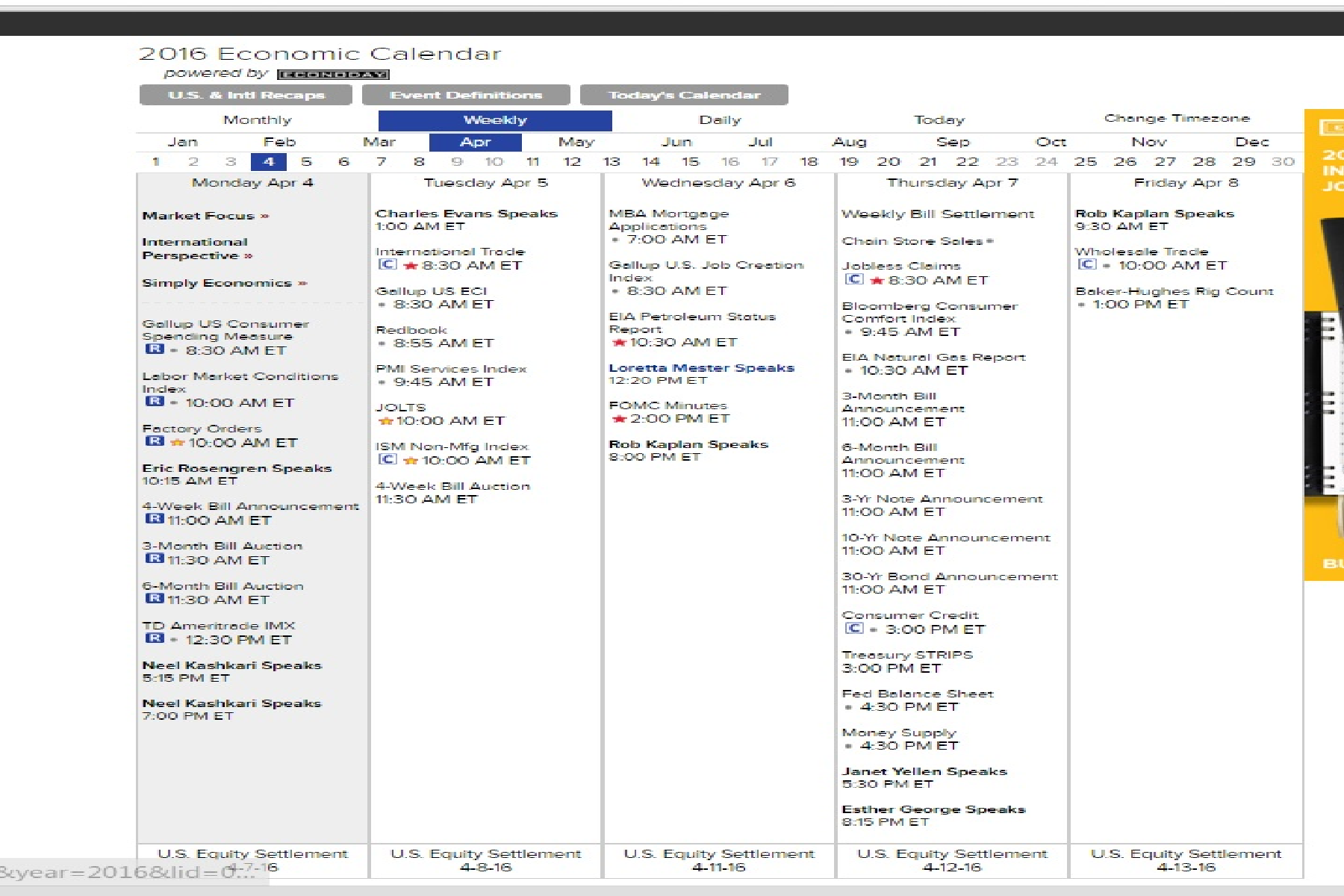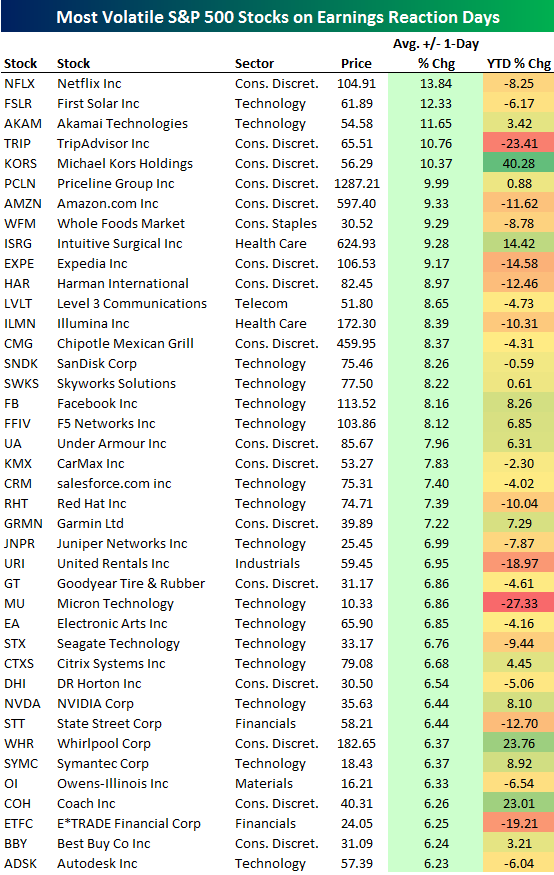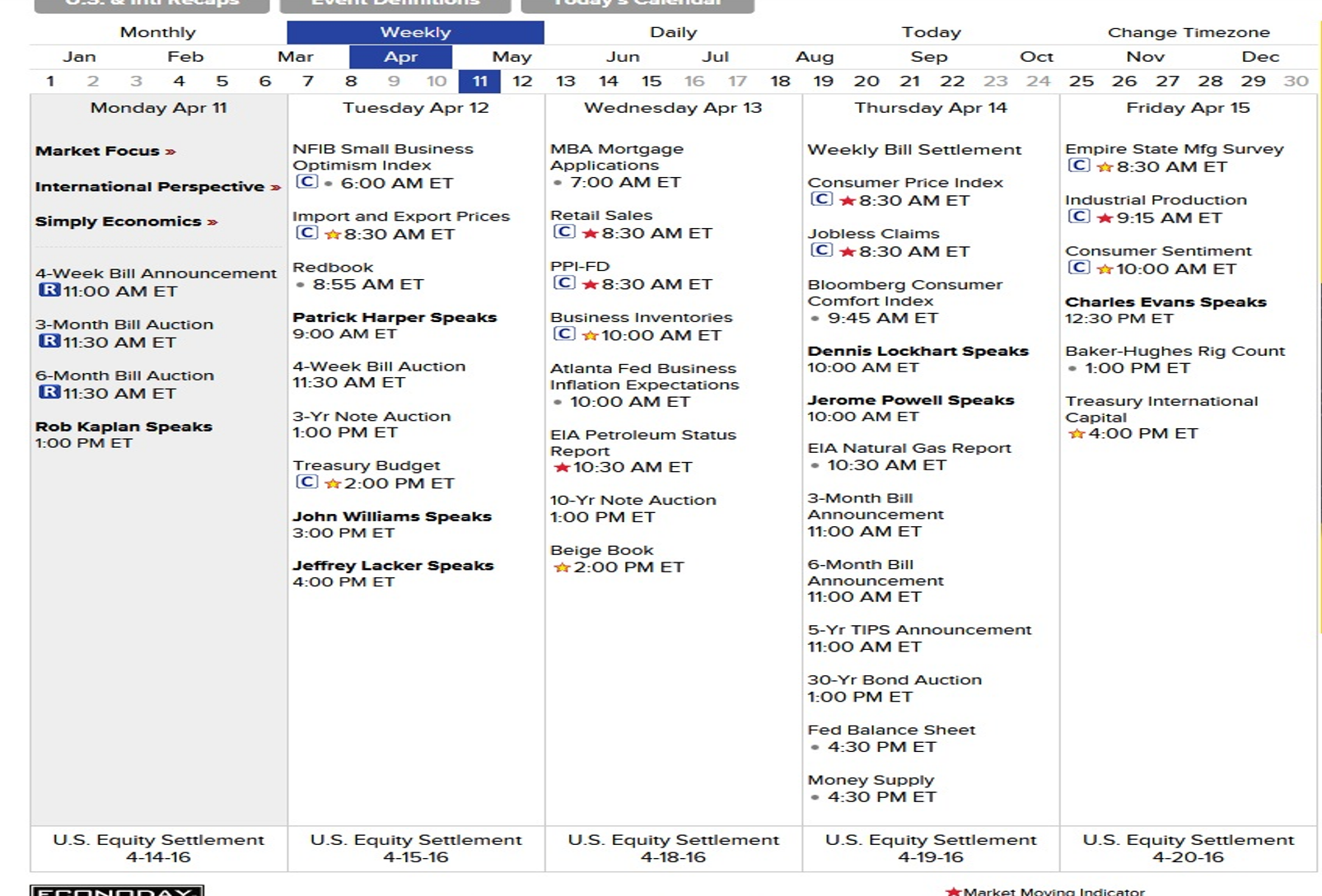Week of April 22 2016 Weekly Recap & The Week Ahead
Monday, April 25th, 2016“The rarest thing on Wall Street is patience!” — unknown
1. Doha Disappoints as Saudi Arabia’s Refusal to Participate In The Deal Without Iran Agreement — the world’s largest oil exporters failed to reach an agreement in Doha to freeze output at January levels. The major sticking point during the meeting was the heightened tension between Saudi Arabia, the de facto OPEC leader, and Iran, which made a last-minute decision not to attend the gathering. Although no one expected Tehran to freeze production after its international sanctions were lifted, it wasn’t clear if the Saudis would demand that Iran immediately join the pact.
2. Mitsubishi Admits To Cheating In Fuel Economy Tests — Mitsubishi Motors Corp. reported late last week there were improprieties in its tests related to fuel-economy performance, affecting about 625,000 vehicles. The improper testing was conducted on four minicar models sold in Japan, Mitsubishi said. Two of the four models are manufactured by Mitsubishi and supplied to Nissan Motor Co. 7201, -0.97% NSANY, -1.27%.
3. SunEdison Files for Bankruptcy After Buying Spree Sours — SunEdison Inc. filed for bankruptcy protection after a two-year, $3.1 billion acquisition binge that drove its debt to unmanageable levels. SunEdison is one of the largest non-financial companies to do so in the past 10 years. Once the fastest-growing U.S. renewable energy developer, SunEdison embarked on an aggressive acquisition strategy that left it struggling with $12 billion in debt.
4. Volkswagen Posts Deep Loss After Taking $18.28 Billion Hit on Emissions Scandal — Volkswagen AG took a €16.2 billion ($18.28 billion) charge related to the emissions-cheating scandal, forcing it to slash its 2015 dividends and post a deep loss. The car maker took a major step toward resolving the scandal, agreeing to offer U.S. owners of nearly 500,000 vehicles a blend of car buybacks, repairs and compensation.
5. Bullish Sentiment Rebounds But Still Below 40% — courtesy of BIG, according to AAII, bullish sentiment increased from 27.9% up to 33.4%. After a huge rally off the February lows that has taken the S&P 500 back within a couple of percentage points from its all-time high. The subdued level of enthusiasm on the part of investors is a trend that has been in place for well over a year now, and one we have thoroughly documented. In fact, this week’s 33.4% reading in bullish sentiment represents the 25th straight week where bullish sentiment was below 40%, and outside of one week in late October, bullish sentiment has been below 40% for 59 of the last 60 weeks.
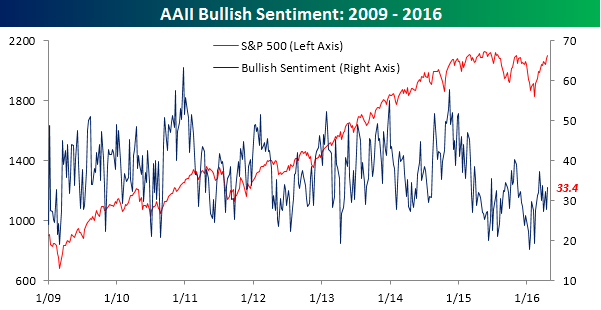
The week ahead — Economic data from Econoday.com:
